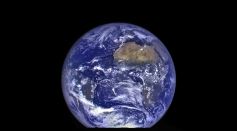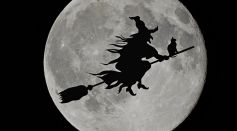Tags: Moon
Lunar Surface Radiation Measurements Show Moon Is Safe for Long-Term Human Exploration

Dynetics Unveils Lunar Lander for Future Artemis Mission

Chitin-Derived Materials Can be Used to Create Tools & Shelter on Mars
NASA Plans to Buy Lunar Rocks From Private Companies

Lunar Hematite: Why Is There Rust on the Moon?

Spring Cleaning on the Moon: Scientists Develop Lunar Dustbuster

Astronauts Train to Explore Lava Tubes on the Moon and Mars

After 50 Years, Earth Receives Laser Signals From the Moon

Witches Band Together on TikTok to Hex the Moon: Did They Succeed?

Weird Glistening ‘Gel-Like’ Substance Found by Chinese Rover Has Now Been Identified
The Truth Behind the Smiley Face Venus, Jupiter and the Moon Will Form on May 16
Human Urine Can Help Make Lunar Concrete in an Attempt to Create Colonies on the Moon
'Impact Theory' Might be Reconsidered as Carbon Emissions are Detected on the Lunar Surface
Origami-Inspired Foldable Lunar Shelter for NASA's Artemis Set to be Tested on Arctic this Fall
Over 500 Patches of Freshly Exposed Bedrock Found on the Moon Proving That It Is Not a Dead Rock After All

Lunar Meteorites For Sale: Fifth Largest Moon Rock Found on Earth Up For Grabs For $2.5 Million
Young Moon Orbiting Around the Earth Is Causing it to Spin So Quickly and Stretched Into Somewhat A Rugby Ball and Double-Frisbee

NASA Explores Future Moon and Mars Homes Made of Fungi
India's Vikram Lander Confirmed to Crash on the Surface of the Moon

Growing Plants in Space: Why It's Important
Most Popular

Will Earth's Magnetic Poles Flip Next? Magnetic Pole Reversal Explained Through Cutting‑Edge Magnetosphere Science

Relativity Time Dilation Explained: The Physics of Time and Why It Moves Differently in Space

How Lightning Science Reveals Why Charged Storms Are Rising with Global Warming Effects

How AI Is Used in Weather Prediction: Smarter Forecasting Through Machine Learning





